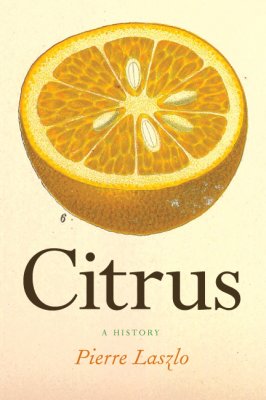Editorial Reviews
Review
New Scientist :
“Did you know there are a billion citrus trees under cultivation, or that grapefruit juice may potentiate the effects of Viagra? Citrus mines over two millennia of history to explore the spread of these fruits out of Asia, their commercialisation in the United States, and [their] enduring symbolism the world over.”—New Scientist
Sunday Times (UK) :
“Stimulating. . . . Laszlo, a retired French chemist, takes us on a journey from the orangeries of Versailles, via the limes of the Royal Navy to the citriculture of modern Florida. It was only in the 1920s, he tells us, that orange juice became ‘an integral part of the American breakfast’, after the great flu epidemic of 1918-19. Laszlo shows that the citrus fruit ‘is a treasure trove of chemicals that are highly useful to humankind’—which also happens to taste wonderful.”—Sunday Times (UK)
The Age :
“A nicely produced hardback with colour plates, which will entertain foodies and culturally replete retirees with time on their hands. Laszlo . . . provides a colorful global history of citrus and citriculture as well as presenting a variety of delicious recipes.”—The Age
Nature :
“Looks at the widespread availability of citrus fruits as an example of how foodstuffs have been propagated around the world. . . . Should help any experimental scientist to become a better cook.”—Nature
Product Description
Walk into your local grocery store and down the produce aisle, and you’ll find a dazzling array of citrus, from navel oranges and clementines to grapefruit and key limes—and sometimes even more exotic fare like the Japanese yuzu or the baboon lemon. Nearly 100 million tons of citrus are produced globally every year, but where did these fruits first come from? How did they find their way into the Western world? And how did they become both a culinary and cultural phenomenon?
Pierre Laszlo here traces the spectacular rise and spread of citrus across the globe: from Southeast Asia in 4000 BC through North Africa and the Roman Empire to early modern Spain and Portugal, whose explorers introduced the fruits to the Americas during the 1500s. Blending scientific rigor with personal curiosity, Citrus ransacks over two millennia of world history, exploring the numerous roles that citrus has played in agriculture, horticulture, cooking, nutrition, religion, and art—from the Jewish feast of the Tabernacles through the gardens and courts of Versailles to the canvasses of Vincent van Gogh to the orange groves of southern California and the juicing industry of today.
“Laszlo . . . has approached the lore of citrus fruit with the élan of a master chef (the man is French, after all), mixing history, economics, biology and chemistry to produce a book that will bring a smile to readers of every taste.”—Natural History
“Altogether charming, eccentric, erudite, and definitely worth the price.”—Times Higher Education Supplement
“Stimulating. . . . Laszlo shows that the citrus fruit ‘is a treasure trove of chemicals that are highly useful to humankind’—which also happens to taste wonderful.”—Sunday Times (UK)
“A short but brilliant account of 6,000 years of citrus fruits that should be devoured with fervor.”—Financial Times
“Did you know there are a billion citrus trees under cultivation, or that grapefruit juice may potentiate the effects of Viagra? Citrus mines over two millennia of history to explore the spread of these fruits out of Asia, their commercialization in the United States, and enduring symbolism the world over.”—New Scientist
See all Editorial Reviews
Product Details
Hardcover: 262 pages
Publisher: University Of Chicago Press (November 6, 2007)
Language: English
ISBN-10: 0226470261
ISBN-13: 978-0226470269
Product Dimensions: 8.9 x 6 x 0.6 inches
Pages: 1 2

